This is a free fortnightly newsletter about the New Zealand Net.
If you would like to be notified by email when a new edition is published, please contact ZL1NZ.
Browse our Newsletter Archive and List of Net Tips.
Featured key
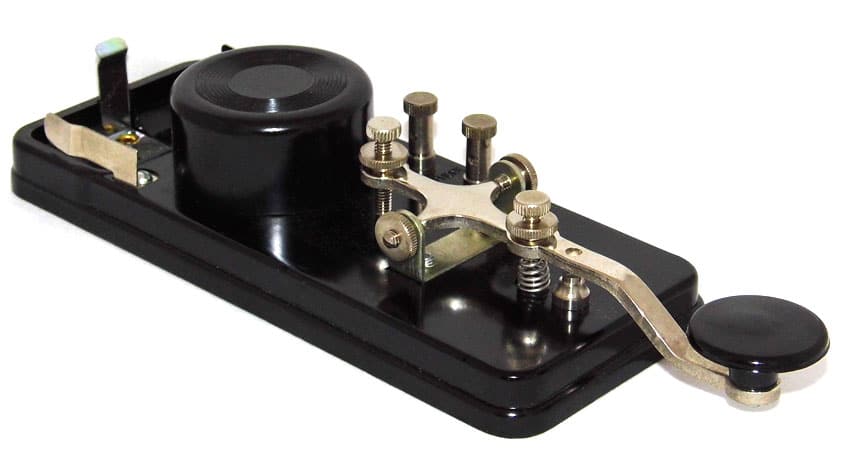
Photo: Joe Haupt on Flickr
The CP250 Code Practice Set was made in Japan, but sold by Philmore Manufacturing Company of New York City. A D-cell battery powered the small buzzer, and headphones could also be connected.
* If you have an interesting key for this feature, please send a nice clear photo and a few words describing it.
Quick notes
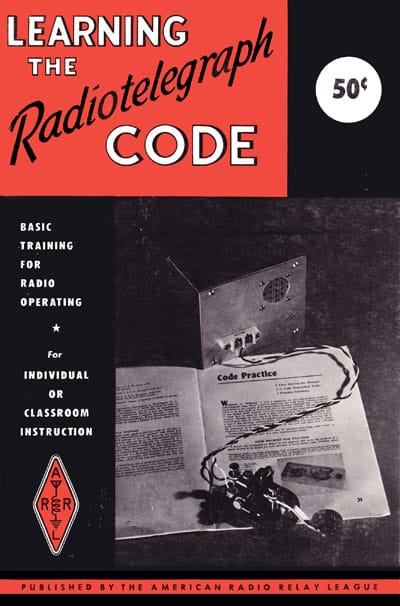 Learning the code is our theme in this edition of NZ Net News.
Learning the code is our theme in this edition of NZ Net News.
Can you recall how you learned? Maybe it was from a book, such as the one pictured here, or perhaps in a code class at your local radio club. Some aspiring amateurs were lucky enough to get one-on-one training from a helpful radio amateur.
Nowadays, many people learn online or via apps on their phones. Some online training includes a human instructor too.
It just goes to show that there are many ways to learn CW. But one thing all these methods have in common is the need to practise, practise, practise. And the best place to practise is on the air.
As radiotelegraph operators, we have the opportunity to encourage and assist newcomers to master the code and to welcome them when they get on the air. Perhaps this edition of NZ Net News will give you some ideas and inspiration to do just that.
If you know of someone who’s keen to learn the code, please pass along this edition of NZ Net News and encourage them to listen for some slow code during Straight Key Monday on NZ Net – the first Monday of each month.
A final note: One of the things I love about CW is that the learning never stops. Each year, I like to set a goal for how I will try to improve as an operator. It seems to help, but there are still so many areas to work on!
Do you set CW goals for yourself? If you do, why not tell us about them and let us know how your fellow net operators can help you achieve them.
Photo flashback
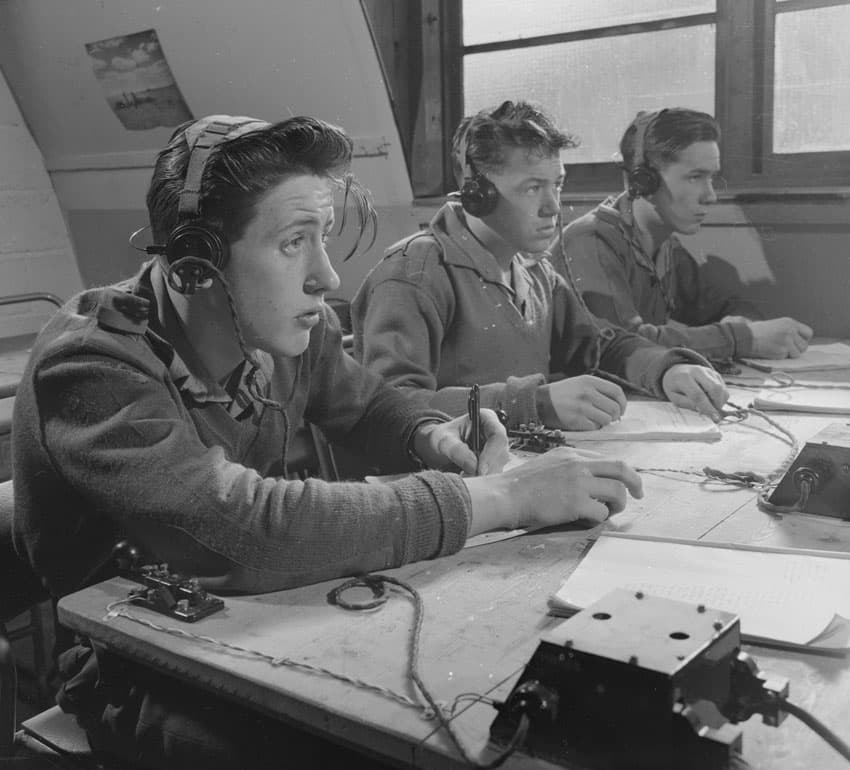
Learning the code – and developing operating skill – requires commitment!
Net numbers

Here is the monthly net report, transmitted to all stations on 2 November:
NR64 R ZL1NZ 47/44 AUCKLAND 0800Z 1NOV23 = NZ NET = OCTOBER QNI VK3DRQ 19 VK4PN 15 ZL1AJY 1 ZL1ANY 18 ZL1AYN 8 ZL1GQ 3 ZL1NZ 4 ZL1PX 10 ZL2GD 13 ZL2GVA 14 ZL2KE 17 ZL2LN 5 ZL2TE 13 ZL3ABX 1 ZL3TK 2 ZL4BDG 16 ZL4FZ 6 ZL4GW 2 ZL4KX 12 TOTAL 179 QTC 31 = ZL1NZ
Christchurch club offers face-to-face code class
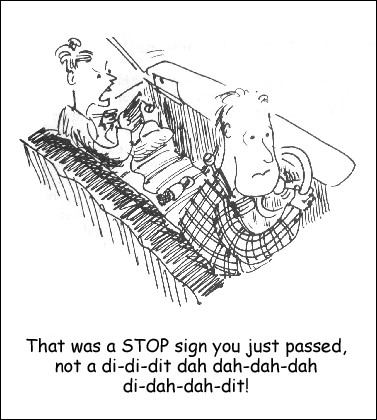 Christchurch Amateur Radio Club (NZART Branch 05) is bringing back face-to-face morse code classes.
Christchurch Amateur Radio Club (NZART Branch 05) is bringing back face-to-face morse code classes.
MorseCram, tentatively scheduled for January 2024, will be a one-weekend (two-day) course intended to get Morse newcomers up to about ten words per minute.
Participants will be required to come along with no preparation, as the instructors “don’t want to spend time unravelling bad habits.”
Organiser Kelvin ZL3KB told NZ Net News: “We decided to run MorseCram to provide a ‘fellowship’ for students learning Morse. We have found many people have given up, or not even started, because it does get so tedious and boring. In the past we had an exam to aim for, but not now.
“The weekend ‘cram’ was chosen so people could get a kickstart in one hit. Also, dedicating two whole days means they have invested time and money into this venture, so perhaps they are less likely to give up?
“Its all an experiment, loosely based on the military method of ‘immersion’, and we shall see what happens.”
About ten people have already signed up for the course.
CW Academy training for downunder hams
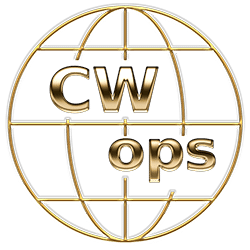 For newcomers to Morse Code, or those wishing to improve their skill, CW Operators Club (CWops) runs CW Academy three times per year.
For newcomers to Morse Code, or those wishing to improve their skill, CW Operators Club (CWops) runs CW Academy three times per year.
Courses are directed at four levels of competence: Beginner, Fundamental, Intermediate, and Advanced.
Chris VK3QB is seeking expressions of interest from those who would like to attend a Beginners or Fundamentals Course in January/February 2024. Courses run for eight weeks, and a detailed syllabus is provided. There are two Zoom sessions per week; Monday and Thursday evenings, VK time.
“CW Academy has trained thousands of amateurs who are now enjoying Morse Code,” says Chris. “The syllabus and methods are tried and tested, and far less frustrating than the methods you may have used in previous attempts to master the code.”
If you have questions, or would like to discuss, please contact Chris VK3QB by email: vk3qb(at)hotmail.com
Scouts try Morse Code
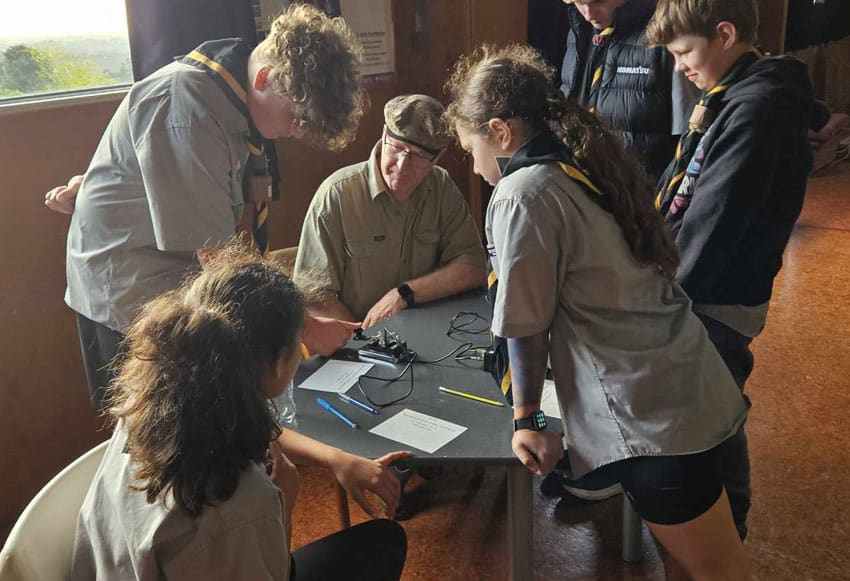
By Peter ZL1PX
When Bombay Scouts group leader Wiebe Boxem emailed me to ask for help with JOTA (Jamboree on the Air), over the weekend of October 21/22, I couldn’t have been more pleased. I had never been to a JOTA, but was determined to provide whatever help the Franklin Amateur Radio Club could offer.
After some research and discussion with fellow club member Steve ZL1TZP, I found JOTA is usually a radio connection between scout groups, most likely in voice mode, with support from ham radio operators. We would have liked to connect Bombay with another scout group, but none was available, so we opted to set up an HF station in the scout den on a normal scout night and use other hams as link stations. For CW that would be Paul ZL1AJY, and on voice it would be Franklin club president Gary ZL1WGL. We agreed on Thursday 26 October as the date of our JOTA event with a start time of 6.30 pm.
After we set up a dipole and an Icom transceiver at the club house, we met eight female and five male Scouts who were keen to send their name in Morse and talk on our 2m handheld.
After a short welcome by Wiebe Boxem, we began with CW on 7020 kHz. We used a practice table and a transmit table. Steve (pictured above) supervised the practice table, where each Scout wrote their name in Morse and practised a few minutes with a key attached to an audio oscillator.
After a few minutes, they moved from the practice table to the transmitting table. Here, they watched keenly while I transmitted ZL1AJY DE ZL1PX QRV FOR XXXX? BK to Paul. When Paul replied with a QRV BK, a youngster would tap their name hesitantly – or sometimes more confidently – on the Morse key followed by a BK. (I had wired a straight key to my Icom – parallel to my cootie.) Paul sent their name back slowly so they were able to check he had got it right. As they had heard their Morse name a few times by now and practiced sending a few more, most of them were able to de-code it themselves. I saw more than a few grins of recognition.
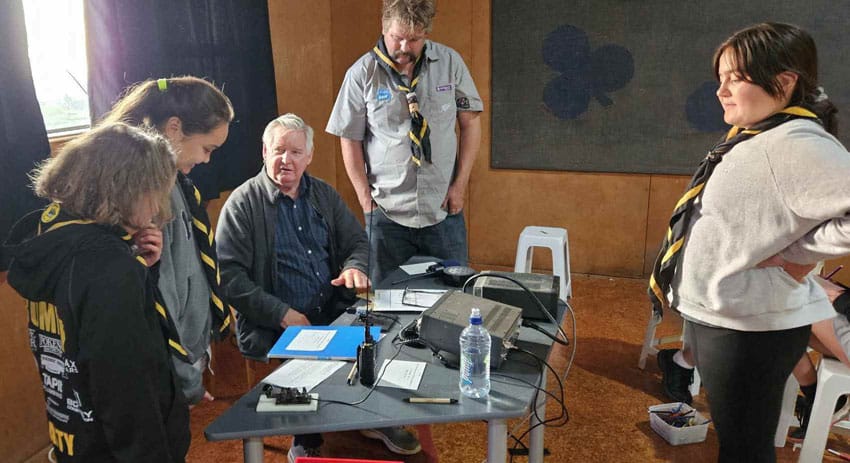
Peter ZL1PX with Scouts
For voice messages, we used a local 2 metre repeater and a handheld radio. Each Scout pressed the PTT button and said ‘Hello Gary, I am XXXX’ and gave the phonetics for their name. Gary asked them what school they attended and what they liked most about school or what hobbies they liked. After a short chat, each Scout ended the conversation with “73.”
Did they enjoy it? One of the scouts, Emmit, got the troop together at the end and called out the letters B-R-A-V-O to which the scouts repeated enthusiastically. Emmit thanked Steve and me for coming and showing them a JOTA. Another scout who helped me carry equipment to the car told me he thought the event was ‘class’ and he enjoyed it. So hopefully we created a special memory for at least some of those who participated.
Morse challenge
Please send your answer to ZL1NZ via radiogram or email.
Answer to previous Morse Challenge
Buenaventura Radio HKC in Colombia was listening on 8, 12 and 16 MHz. Correct answers were received from VK3DRQ, VK6RR, ZL1ANY, ZL2GVA and ZL4LDY.
Video excerpt: LICW Club training style
The Long Island CW Club is a group dedicated to training CW operators. In this video, Howard WB2UZE and Jim W6JIM talk about the LICW Club’s training methods, including how they deal with the common issue of plateaus…..
Advertising archive
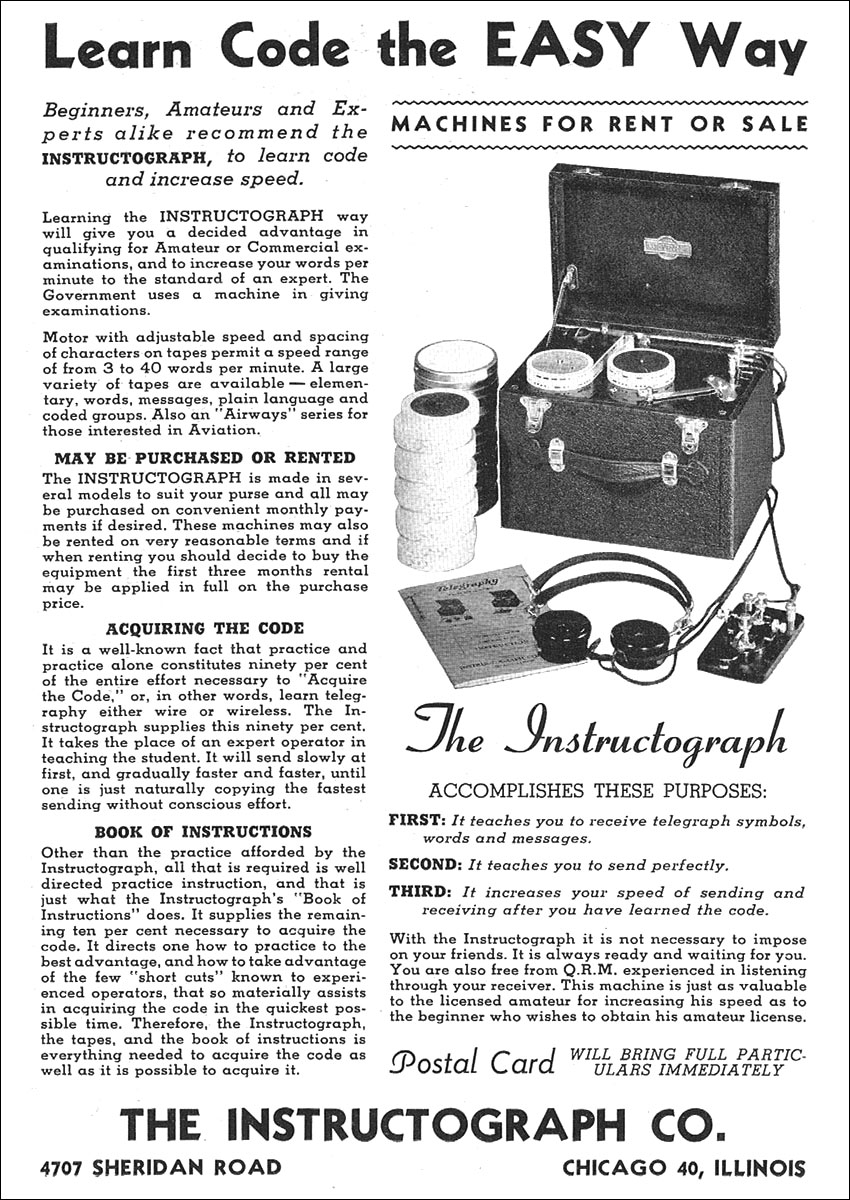
Radio Amateur’s Handbook 1957, ARRL
Suggestions?
If you have suggestions on how to make the NZ Net better, or things you’d like to see covered in these updates, please contact ZL1NZ. You might even like to write something for the newsletter.
Thanks for reading, and I hope to hear you soon on the NZ Net!
—
Neil Sanderson ZL1NZ, Net Manager
New Zealand Net (NZ NET)
3535.0 kHz at 9pm NZT Mon-Fri


